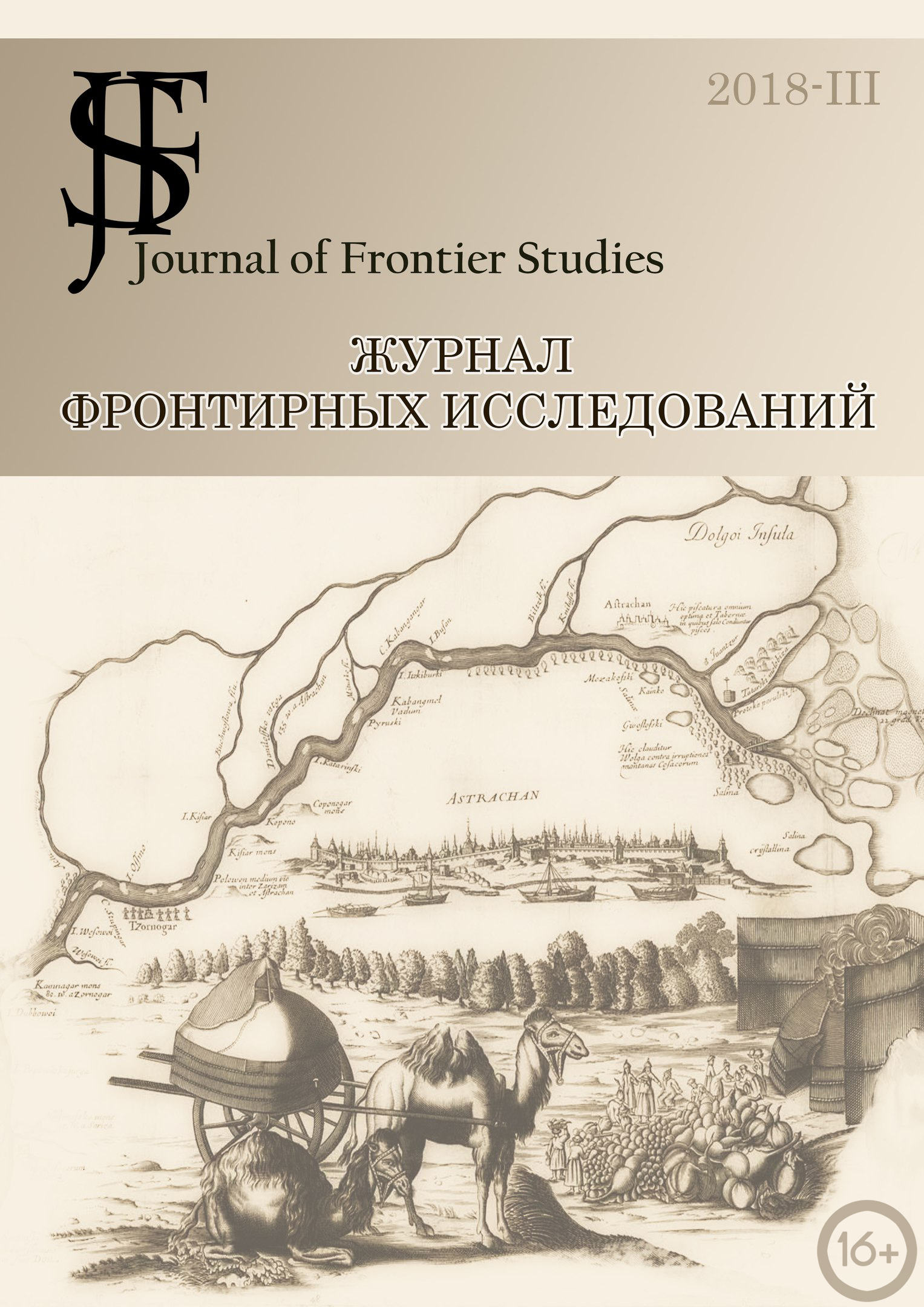Аннотация
В статье представлены результаты полевых исследований традиционного наследия донских калмыков, которое рассматривается в широком контексте исторических обстоятельств и этносоциальных процессов южнороссийского региона.
В центре внимания находится современное состояние субэтнической культуры: источники ее содержательного наполнения, факторы, формы и субъекты межпоколенческой трансмиссии.
Обобщая полевые наблюдения, автор предлагает структурно-функциональную модель современной калмыцкой традиции, в которой выделяет три уровня, согласно ведущему феноменологическому признаку: актуальный, меморативный и конструктивный. Факторы, определившие направление исторической динамики, подразделяются на ряд категорий, в соответствии с масштабом и избирательностью событий, в рамках которых донские калмыки были консолидированы с другими сообществами. Данную классификацию дополняет типология носителей традиции, в основе которой лежит возрастная иерархия, соотнесенная со специфическим социальным опытом.
Основной источник исследования – полевые материалы этнолингвистической экспедиции в Яшалтинский и Городовиковский районы Республики Калмыкия, осуществленной Институтом социально-экономических и гуманитарных исследований Южного научного центра РАН в 2010 г.
Литература
Assmann, J. (1995). Collective memory and cultural identity. New German Critique, 65, pp. 125–133.
Bakaeva, E.P. (2016). On a tradition of Mongolian peoples. Etnograficheskoe obozrenie, 6, pp. 107–122.
Batyreva, K.P. & Batyreva, S.G. (2015). Figurative art and epic imagery in Kalmykia in light of the ethnic identity of the creative individual. Anthropology & Archeology of Eurasia, 54(3), pp. 6–23.
Dushan, U.D. (2016). Selected papers. Elista: Kalmyk Institute for Humanities (in Russian).
Gavrilova, K.A. (2016). Returning the public culture to the public: the correct Shrovetide and administration of rural cultural festivities. Etnograficheskoe obozrenie, 6, pp. 27–43.
Grin, F. (2001). Kalmykia, victim of Stalinist genocide: from oblivion to reassertion. Journal of Genocide Research, 3(1), pp. 97–116.
Hirsch, M. (2008). The Generation of postmemory. Poetics Today, 29:1, pp. 103–128.
Maksimov, K.N. (2016). Kalmyks as part of the Don Cossacks (17th – the middle of the 20th century). Rostov-on-Don: SSC RAS Publishers (in Russian).
Maslakovets, N.A. (1872). Physical and statistical description of the nomadic area of the Don Kalmyks. In 2 vols. Novocherkassk: Don Host Printing House (in Russian).
Namrueva, L.V. (2013). The attitude toward interethnic marriages in the present day Kalmykia. Etnograficheskoe obozrenie, 2, pp. 168–176.
Popov, I.I. (1919). Don Kalmyk Cossacks, The essays on Geography of the All-Mighty Don Host. Novocherkassk: Printing House of the Artillery Control Office of the All-Mighty Don Host (in Russian).
Richardson, C. (2002). Stalinist terror and the Kalmyks’ national revival: a cultural and historical perspective. Journal of Genocide Research, 4(3), pp. 441–451.
Sharmandziev, D.A. (2013). From the history of 20th century Kalmyk emigration to European countries and the USA. Etnograficheskoe obozrenie, 3, pp. 117–124.
Terentyev, V.I. (2016). Current transformations of ethnic identity among the Western Mongolians. Etnograficheskoe obozrenie, 3, pp. 146–161.


